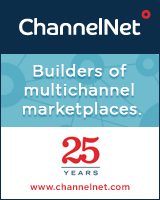They were spending a significant amount of money on toner cartridges, repairs and buying the actual printers.“
– Brian Bradbury, Business Partner in IT organization at Smiths Group
*
A Proliferation of Printers
At Transtector headquarters in Hayden Lake, Idaho, print devices were numerous and abundant. “We had 76 different print devices at this location,” said Brian Bradbury, Business Partner in the IT organization at Smiths Group, Transtector’s parent company. “It was a wide variety of items, from laser printers to scanners, fax machines to desktop printers. There must have been six or eight different brand names and as many as forty or fifty different models of devices. So you can imagine what it was like to try to keep track of the toner cartridges and repairs of those devices as they needed assistance.”
Transtector Systems is a manufacturer of power protection products, including signal protection, EMP/EMI filters, power distribution units (PDU) and uninterruptible power supplies (UPS). Transtector is a subsidiary of Smiths Group, a global technology conglomerate based in London, England, that operates in more than 50 countries. Smiths’ annual revenue is $7 billion, and Transtector represents $80 million of that amount.
A proliferation of printers is common in enterprises, especially when purchasing decisions are decentralized. You can imagine how it might happen: The sales team decides to buy inkjet printers for their desks. The accounting department has its own laser printer, and accounts receivable and accounts payable each have dedicated fax machines. Marketing invests in a scanner and color laser printer. And so it goes until print devices are ubiquitous.
From the perspective of Transtector’s users, the situation seemed to work well. The company had an agreement with a VAR to receive discounted pricing for top-model, brand-name printers. When printer ink ran low, employees used an expense report to buy new cartridges, and when a print device wore out, they bought a new one. This ad hoc approach met their basic printing needs.
“It is only when you reviewed the costs from the top-down that you see the impact to the overall organization,” noted Bradbury. “They were spending a significant amount of money on toner cartridges, repairs and buying the actual printers.”
Shared, Consolidated Printing Solution on Lease
As a member of Smiths centralized IT organization, Bradbury’s job was to present corporate best practices and special pricing agreements to Transtector and help manage implementations. Smiths had negotiated a contract with the printer manufacturer Ricoh to visit Smiths’ portfolio companies, review their printer needs and spending and supply consolidated printing “kits” on lease that would deliver hard savings. The kits included Ricoh Aficio multi-function printers as well as ongoing equipment maintenance and toner.
All I do is buy the paper and pay the use fee on the lease, and it saves five thousand dollars a month as we move forward.“
– Brian Bradbury
A team from IKON, Ricoh’s document management subsidiary, performed an assessment of Transtector and proposed a kit that would consolidate print devices dramatically. Transtector approved it and the new solution was rolled out. “We ended up with 12 devices instead of 76. They are multi-function devices placed strategically throughout our facility. I don’t maintain it. All I do is buy the paper and pay the use fee on the lease, and it saves five thousand dollars a month as we move forward,” said Bradbury.
As part of the maintenance process, IKON monitored printer usage and performance. Their technicians noticed that 3 of the 12 devices were outputting higher than anticipated print counts. So IKON swapped them out for larger models that could maintain higher levels of printing without overtaxing the equipment. “They do a fantastic job of maintaining the process, reviewing it and making sure each location has the equipment necessary for the particular demand,” he said.
Everyone Pleased, Eventually
Transtector executives and financial staff were pleased with the $5,000 monthly savings and positive contribution to profit margins, though users initially had difficulty seeing the value of removing the printers from their desk or immediate work area and putting one 20 feet down the hall. It just seemed inconvenient. However, they eventually warmed up to the value of higher availability and faster repair times. If a print device had a problem, users no longer had to roll up their sleeves and try to troubleshoot it. Instead they submitted a helpdesk ticket and Ricoh/IKON technicians took care of it. They could send print jobs to next closest printer in the meantime. After a few months of experiencing the consistency and low hassle of a shared and externally-maintained printing solution, users also felt positive about it.
Successful IT projects like this also build credibility and make Bradbury’s job easier as he proposes new initiatives from Smiths’ IT organization. Winning acceptance for projects often requires overcoming people’s natural resistance to change. “As you have successes, as you show value, they start to believe your presentations back to the business, if you are consistent in delivery as projects move forward,” he said.

Copyright © 2011 Apropos LLC. All rights reserved.
Filed under: Outsourcing, Hosting and Software-as-a-Service, Printing, Uncategorized | Leave a comment »


